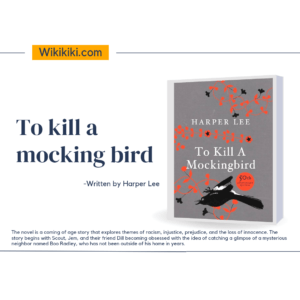
Table of Contents
Summary about the book “To kill a Mockingbird”
“To Kill a Mockingbird” is a novel written by Harper Lee, published in 1960. The story is set in the small, fictional town of Maycomb, Alabama, in the 1930s. It is narrated by Jean Louise Finch, or “Scout,” a six-year-old girl who lives with her father, Atticus Finch, and her brother, Jem.
The novel is a coming-of-age story that explores themes of racism, injustice, prejudice, and the loss of innocence.
The story begins with Scout, Jem, and their friend Dill becoming obsessed with the idea of catching a glimpse of a mysterious neighbor named Boo Radley, who has not been seen outside of his home in years.
As the children’s fascination with Boo Radley wanes, their attention is drawn to a controversial trial in town. Tom Robinson, a black man, is accused of raping a white woman, Mayella Ewell.
Atticus is appointed as Tom’s defense lawyer, and he is determined to give Tom a fair trial, despite the racial tensions and prejudice that run deep in Maycomb.
Atticus’s defense of Tom Robinson leads to a backlash from some of the townspeople, who view him as a traitor to their white supremacist beliefs.
Jem and Scout also face discrimination and violence as they witness the ugly side of racism and hatred in their town.
Despite Atticus’s best efforts, Tom is found guilty, and he is killed while attempting to escape from prison. The trial and its aftermath leave a impact on Jem and Scout, who are forced to confront the harsh realities of the world around them.
Throughout the novel, Scout and Jem’s father, Atticus, serves as a moral compass, teaching them to see the world from a perspective of empathy and understanding.
Atticus’s wisdom and integrity are a guiding force for Scout and Jem as they navigate the complexities of race, class, and justice in their community.
The novel’s climax occurs when Bob Ewell, Mayella’s abusive father, seeks revenge on Atticus for humiliating him during the trial.
Bob attacks Jem and Scout as they are walking home from a Halloween party, but Boo Radley intervenes and saves their lives.
In the aftermath of the attack, Scout reflects on the events that have transpired and realizes that Boo Radley, the mysterious neighbor who had been the subject of so much fascination and speculation, had been watching over her and her brother all along.
Scout learns that true courage and kindness can come from unexpected places. “To Kill a Mockingbird” is a powerful novel that explores the complicated issues of racism and injustice in the American South.
Harper Lee’s use of Scout’s perspective and her simple, direct language make the story accessible to readers of all ages, while her portrayal of the characters and the themes of the novel make it a timeless classic.
The novel has been adapted into multiple films and has been widely studied and celebrated for its contribution to American literature.
Lessons or Takeaways from the book “To kill a Mockingbird
- The Importance of Empathy: “You never really understand a person until you consider things from his point of view… Until you climb inside of his skin and walk around in it.” Atticus Finch’s advice to his children, Scout and Jem, highlights the importance of empathy in understanding others.
- The Dangers of Prejudice: The novel explores the dangers of prejudice and the negative impact it can have on individuals and society as a whole. Atticus teaches his children that people should be judged based on their character, not their skin color.
- The Power of Courage: Atticus demonstrates incredible courage in defending Tom Robinson, a black man accused of rape. He inspires his children to be brave and stand up for what is right, even in the face of opposition.
- The Complexity of Human Nature: The characters in To Kill a Mockingbird are complex and multi-dimensional. Even characters who are initially portrayed as villains, such as Boo Radley and Bob Ewell, are shown to have both positive and negative qualities.
- The Importance of Education: Atticus values education and encourages his children to learn as much as possible. He recognizes that education is essential for personal growth and the betterment of society.
- The Role of Women: The novel explores the limited role that women played in society in the 1930s. Scout struggles with the expectations placed on her as a girl and is encouraged by her father to pursue her interests and passions.
- The Innocence of Childhood: The novel portrays childhood innocence as a valuable and fleeting state of being. Scout and Jem’s experiences with prejudice and injustice challenge their perceptions of the world and force them to grow up quickly.
- The Importance of Family: The Finch family is shown to be a tight-knit and supportive unit. Despite the challenges they face, they remain loyal to each other and provide a source of strength and comfort.
- The Injustice of the Legal System: The trial of Tom Robinson highlights the flaws and injustices of the legal system. Despite Atticus’s strong defense, Tom is found guilty simply because of his race.
- The Need for Compassion: Throughout the novel, characters are shown to benefit from acts of compassion and kindness. Boo Radley’s eventual act of kindness towards Scout and Jem highlights the transformative power of compassion.
Quotes from the book “To kill a mockingbird”
- “You never really understand a person until you consider things from his point of view – until you climb into his skin and walk around in it.”
- “Atticus told me to delete the adjectives and I’d have the facts.”
- “I’d rather you shoot at tin cans in the backyard, but I know you’ll go after birds. Shoot all the blue jays you want, if you can hit ’em, but remember it’s a sin to kill a mockingbird.”
- “People generally see what they look for, and hear what they listen for.”
- “I think there’s just one kind of folks. Folks.”
- “The one thing that doesn’t abide by majority rule is a person’s conscience.”
- “Mockingbirds don’t do one thing but make music for us to enjoy. They don’t eat up people’s gardens, don’t nest in corncribs, they don’t do one thing but sing their hearts out for us. That’s why it’s a sin to kill a mockingbird.”
- “There are some men in this world who are born to do our unpleasant jobs for us. Your father’s one of them.”
- “I wanted you to see what real courage is, instead of getting the idea that courage is a man with a gun in his hand. It’s when you know you’re licked before you begin, but you begin anyway and see it through no matter what.”
- “It’s not time to worry yet.”
About the Author “Harper Lee”
Harper Lee (April 28, 1926 – February 19, 2016) was an American novelist and Pulitzer Prize winner best known for her novel “To Kill a Mockingbird.”
Lee was born in Monroeville, Alabama, and was the youngest of four children. Her father was a lawyer and served as the inspiration for the character Atticus Finch in “To Kill a Mockingbird.”
Lee attended the University of Alabama and then moved to New York City to pursue a writing career. In 1960, she published “To Kill a Mockingbird,” which became an instant classic and was a huge critical and commercial success.
The novel explores themes of racial injustice and the loss of innocence in a small Southern town during the 1930s. Lee won the Pulitzer Prize for Fiction for “To Kill a Mockingbird” in 1961.
She did not publish any other novels until 2015 when her manuscript for “Go Set a Watchman,” a sequel to “To Kill a Mockingbird,” was discovered and published. However, the sequel was met with mixed reviews and controversy.
Lee was a private person and rarely gave interviews or made public appearances. She lived a quiet life in Monroeville and continued to write until her death in 2016 at the age of 89.
Despite her limited body of work, Lee’s impact on American literature is significant. “To Kill a Mockingbird” is widely regarded as a masterpiece of American literature and is a staple of high school English classes.
Lee’s depiction of racism and the civil rights movement in the South helped to spark important conversations about race in America.
Conclusion and Rating
“To Kill a Mockingbird” is a masterpiece of American literature that portrays the complexities of racial injustice and inequality in the Deep South during the 1930s.
It is a timeless classic that continues to inspire readers with its powerful message of empathy, compassion, and tolerance. Through the eyes of Scout Finch, Harper Lee has beautifully captured the innocence and the harsh realities of a child’s world, which still resonate with readers today.
Rating: I would give “To Kill a Mockingbird” a 5 out of 5 rating. The book is a remarkable achievement in literature that explores the important themes of racism, injustice, and morality in a sensitive and engaging way. The writing is exceptional, the characters are well-developed, and the story is both thought-provoking and heart-warming.

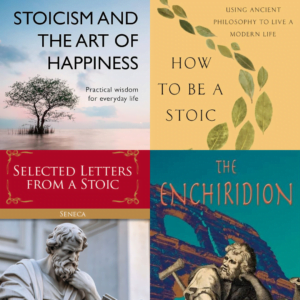
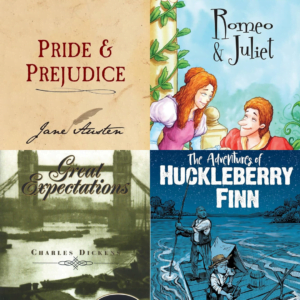
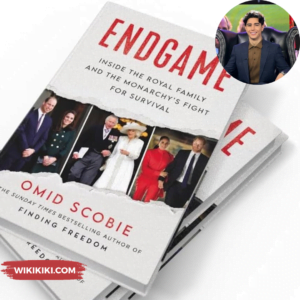

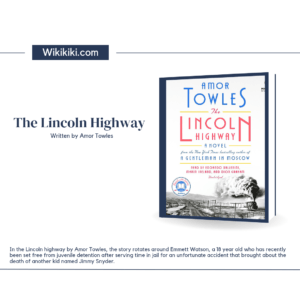













+ There are no comments
Add yours